AFFILIATE MARKETING
Is It the Best Survey Site for Fast Cash?

Could Respondent.io help you earn some extra money in exchange for your opinion?
Probably so, but maybe not quite in the way you think.
After all, if you’ve been looking for ways to make a little extra cash on the side, you’ve likely come across paid survey sites like Swagbucks and Survey Junkie.
But, even though Respondent sometimes gets lumped in with those sites, it’s not really the same at all.
For one thing, there’s usually nothing quick about making money on Respondent.
And for another, the payouts blow simple survey sites out of the water – $100 or more for an hour of your time is not out of the question.
If you’re intrigued so far, then read on!
In this Respondent.io review, we’ll dig into the details of this unique platform to see if it’s a good fit for you.
Respondent.io
-
Study Availability
-
Potential Payouts
-
Sign-Up Process
-
Ease of Use
Summary
Respondent.io lets you earn good money – sometimes $100 per hour or more – for sharing your opinion. With hundreds of studies underway at any given time, you’re sure to find a few that fit your interests and expertise. Click here to check out Respondent.io now for FREE!
Pros
- High payouts
- Vetted researchers
- Lots of studies to participate in
- Lucrative referral program
Cons
- You have to share a lot of personal information
- Lots of competition
- Many studies target specific professions
Respondent.io Review: What Is It?
At its core, Respondent is a platform that connects market researchers with study participants. If there is a match, you can earn money by sharing your opinion.
But, unlike most survey sites, Respondent pays very well, with some gigs offering more than $100 for about an hour of work.
The catch is that it’s tougher to land gigs on Respondent, and you have to commit a decent amount of time to each project you take on.
More on that later, but first, let’s answer an important question…
Is Respondent.io Legit?
The good news is that Respondent is absolutely legitimate, and you can feel confident in signing up and applying for studies.
That’s because Respondent vets both researchers and study participants and has built a great overall score in G2.
Researchers have to set up an organization on the platform before they can ever post a project. Then, Respondent spends a couple of days checking out the business information to make sure it’s all legitimate.
Researchers have skin in the game, too – Respondent charges them 50% of the per-participant payout. So, if you get paid $100, the researcher has to shell out $150 overall for your participation – $100 to you, $50 to Respondent.
In turn, when you sign up as a participant, you provide details like your age, gender, education level, and occupation to prove you’re a real person. And to participate in the industry-specific studies that pay the most, you also need to verify your work email address.
We’ll focus on the participant side of things for the rest of this Respondent.io review, but you might be interested in the list of customers they maintain here. There aren’t too many survey sites that give you a chance to work with companies like IBM, Allstate, and GitLab!
Respondent.io Review: Who’s It For?
The only hard restriction on who can sign up as a Respondent participant is that you have to be 18 years old or older.
But, as mentioned above, you also need to be willing to share your personal details. Having that information helps Respondent make better matches and researchers customize their focus group.
You can also increase your chances of being accepted into studies (and getting paid!) by verifying your work email through your profile. It’s an easy way for Respondent to match your claimed profession with your company’s industry.
How Do You Make Money on Respondent.io?
Making money on Respondent is straightforward, though not necessarily easy.
First, you need to get set up on the platform.
Sign Up and Complete Your Profile
You can sign up as a participant either using an email/password combination or by connecting through your Facebook or LinkedIn account:
Once you’re in, the setup wizard leads you through a series of questions to build your profile.
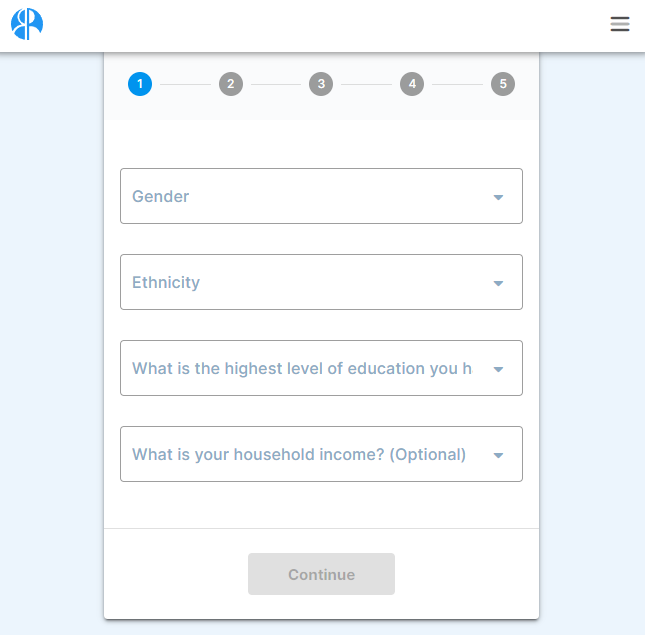
You’ll also need to enter your PayPal email address so you can get paid.
Once you have completed your profile information, you’re ready to get started.
Find a Project
On the Respondent dashboard, you’ll see a list of available research projects:
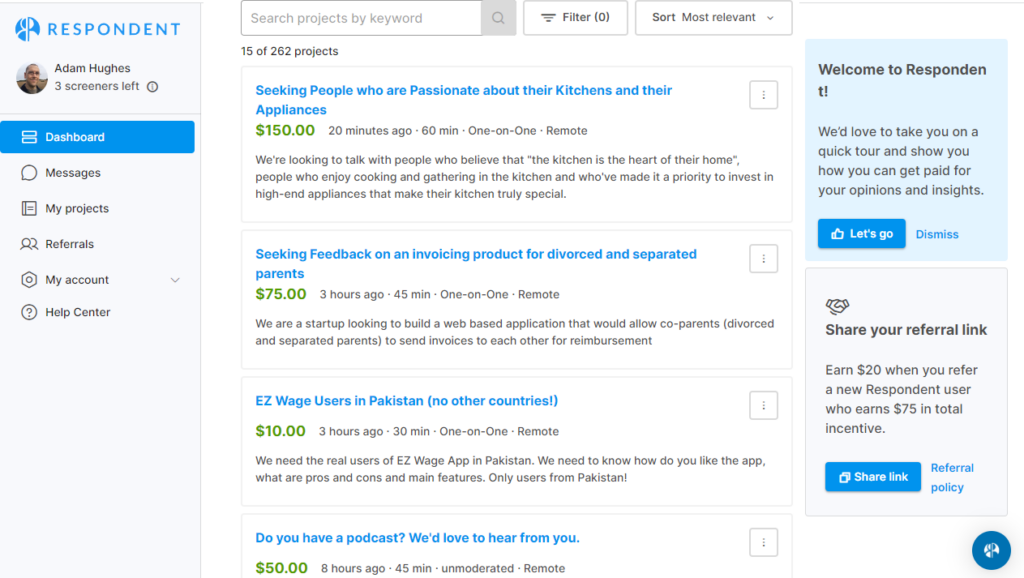
Click on a listing that looks interesting to see more details about that opportunity.
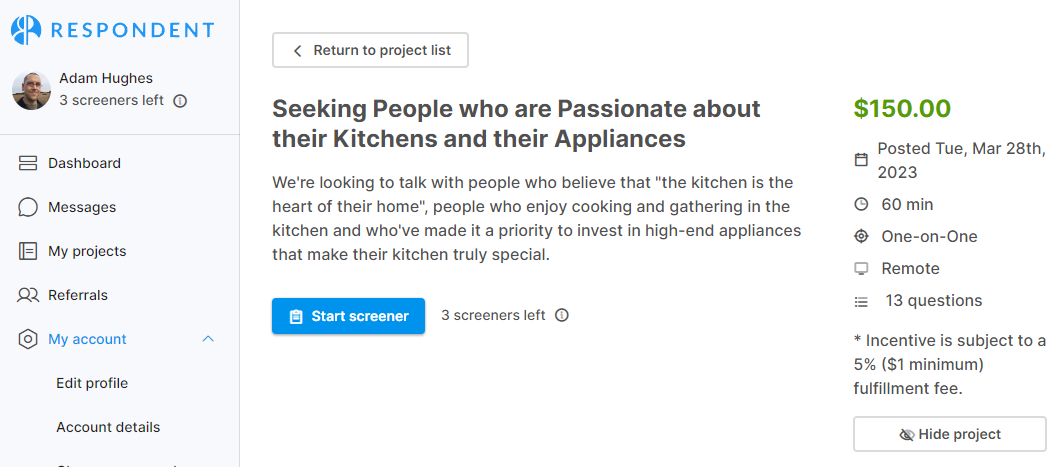
If this looks like something you want to do, then move on to the next step.
Take a Screener
For each study, researchers specify a series of questions for potential participants to answer.
This “screener” is like a mini-application and helps companies make sure their respondents have certain characteristics or qualifications.
Here is an example screener:
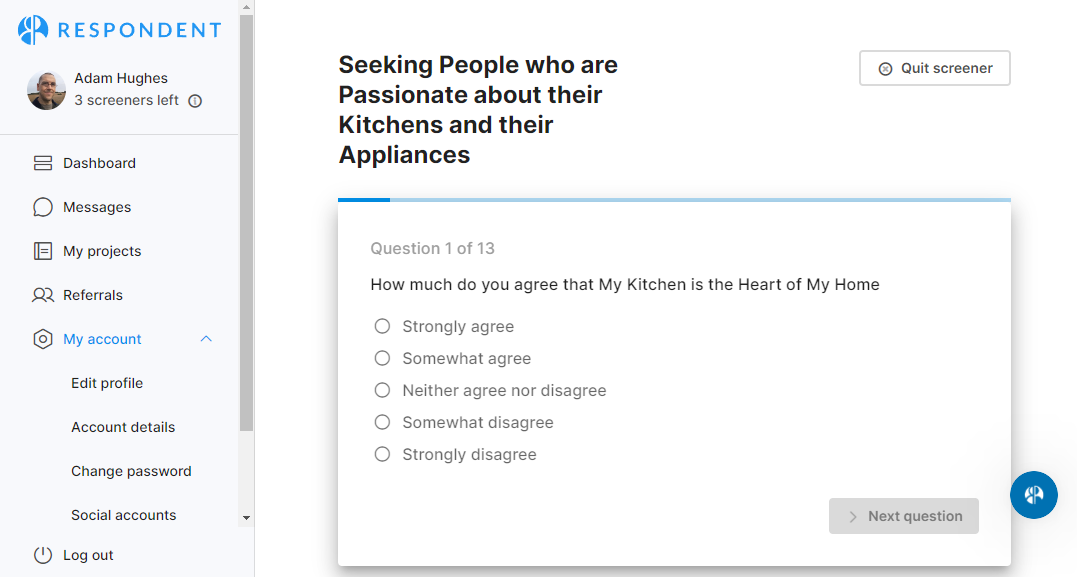
Once you submit a screener survey, the next step is both easy and difficult: you wait.
The good news is that you don’t have to do anything else at this point to be considered for the gig.
The bad news is that you may not hear anything more. There are generally lots of applicants for each research project, so don’t be surprised if you don’t score on your first try.
But, eventually, you’ll get the chance to earn.
Participate in the Study
If the study organizers decide they want to work with you, they’ll contact you through the Respondent platform.
From there, you’ll complete your part of that paid research study. Most of the time that means arranging a time with the researchers for a remote interview. Those tend to last from 15 minutes to an hour.
There are also a few opportunities here and there that involve actual in-person interviews. When I was doing the research for this article, I found 21 in-person studies out of 252 total listings on the site.
That’s about 8%.
Even more scarce are studies conducted through an online survey. I found 15 of those while writing this piece, or about 6% of all listings on the site.
Once you’ve finished your interview or survey, the researcher will sign off on your participation, and Respondent will pay you through your PayPal address.
Refer Others
Beyond participating in projects yourself, you can also make money by sending projects to new users.
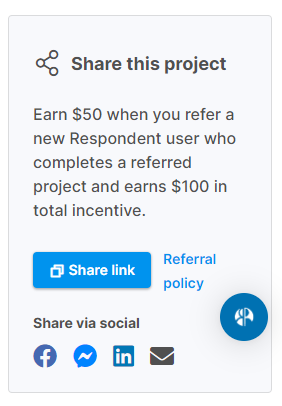
If someone you refer completes a project, Respondent will pay you between $25 and $50.
Respondent.io Review: Features
We’ve already seen most of the core features in action, but here are a few others worth pointing out in this Respondent.io review.
Project Lists
The main tool Respondent has for matching researchers with potential study participants is their list of available projects. That’s where you land when logging into your Respondent account or clicking the Dashboard menu item, as we saw above.
But you can also filter those listings by audience type, project type, payout, and duration.
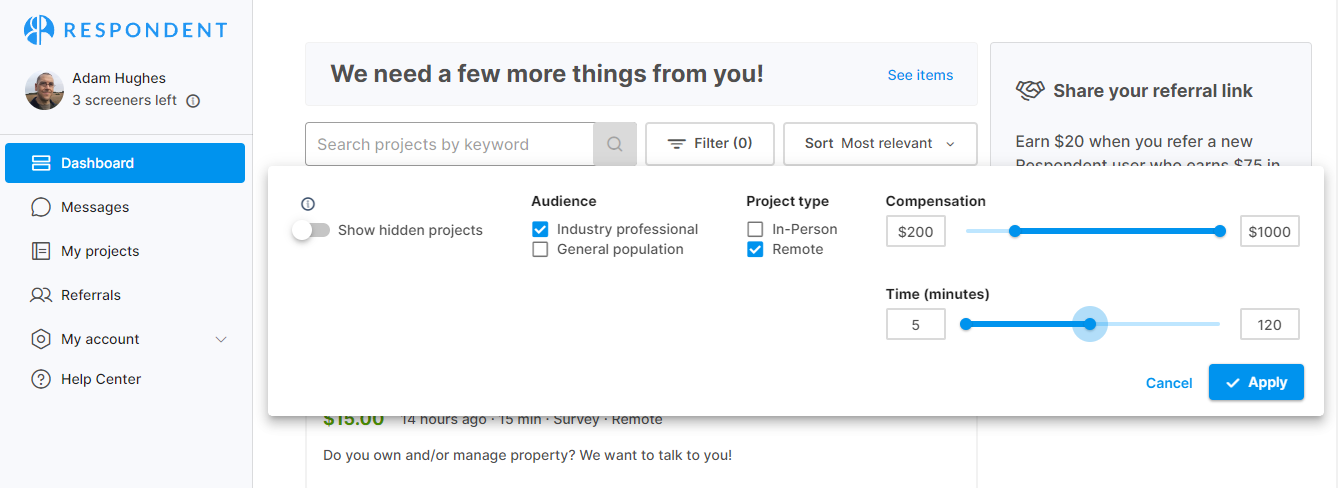
Here, I’ve set the filter to look for studies that need industry professionals, are conducted remotely, pay $200 or more, and require two hours or less to complete.
That narrows down the list of opportunities, but more than a few are still available.
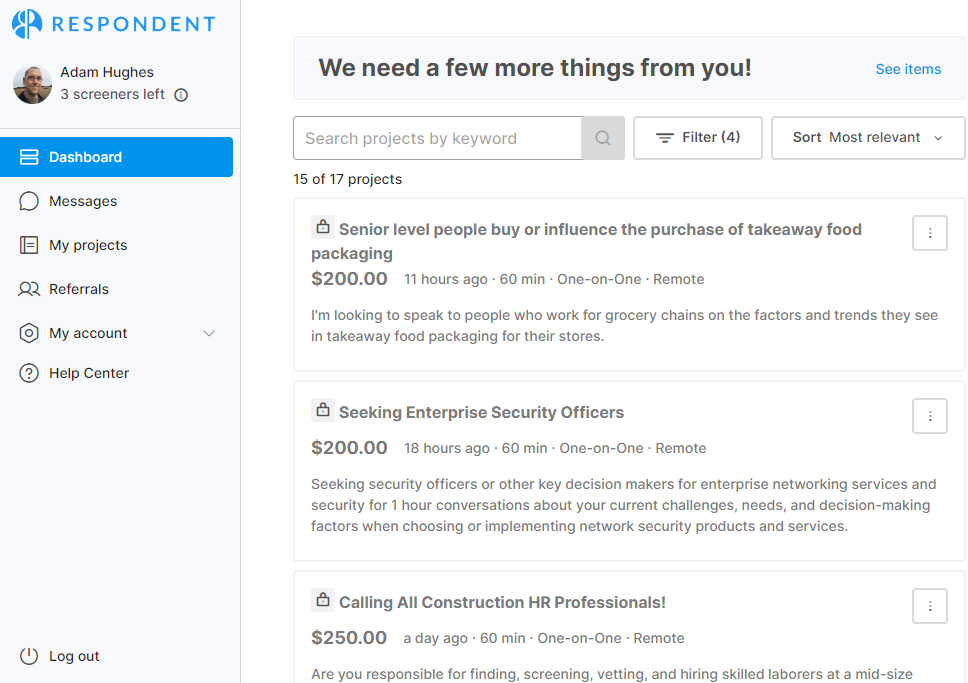
Once you’ve applied to be part of some studies, you can see a running list in the “My projects” tab.
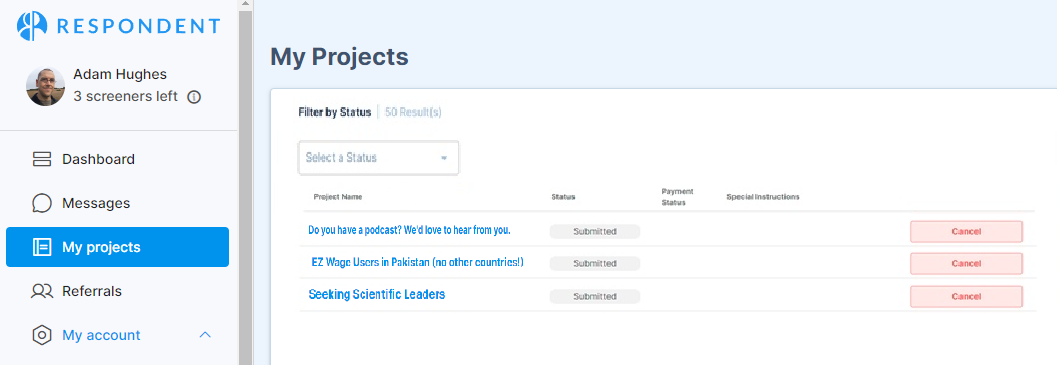
Here, you can keep track of the status of each project, and you can also cancel your application if you want.
Messaging
Like most companies that match freelancers with projects, Respondent wants to keep communication confined to their platform as much as possible.
So, you’ll receive notifications about the studies you’ve applied for through the “Messages” section of the site.
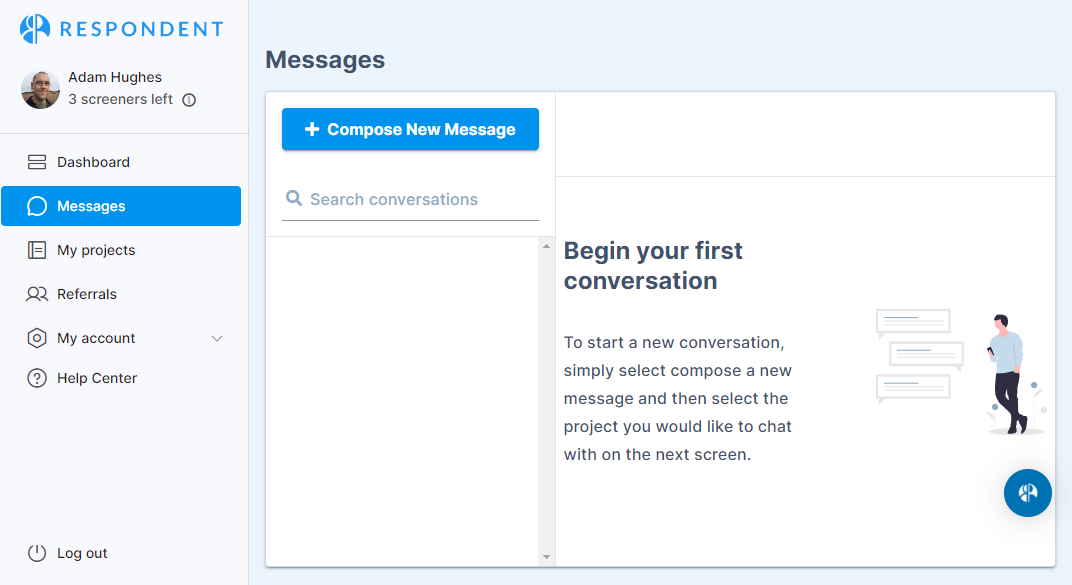
You can also initiate messages to the researchers who run the projects you’re participating in.
Confining communication to this channel reduces the chances that researchers and participants will make offline arrangements that could eat into Respondent’s profits.
There are cases, though, when Respondent allows researchers to contact you via your registered email address. They’ll tell you that’s the case when you’re taking the screener, so you can decide whether you want to proceed or not.
Referrals
You’ll be reminded on many pages of the Respondent site that you can earn money for referrals.
But there is also a dedicated page where you can go to get your referral link or browse projects to send to your friends.
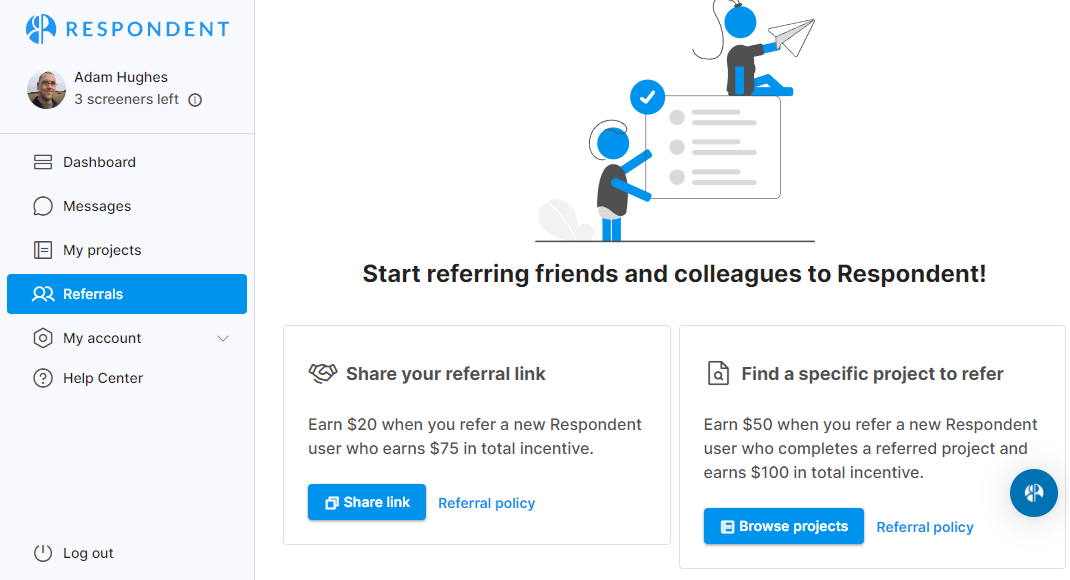
As you can see, there are some restrictions and limits on the amount of referral money you can make, but it’s still a nice perk of the platform!
Respondent Profile
Your participant profile is what sets you apart from other candidates competing to participate in the same studies.
Here, you can set and update your demographic information, your job skills, your social media accounts, and your employment history. You can even create a video introduction to help researchers get to know you a little bit better.
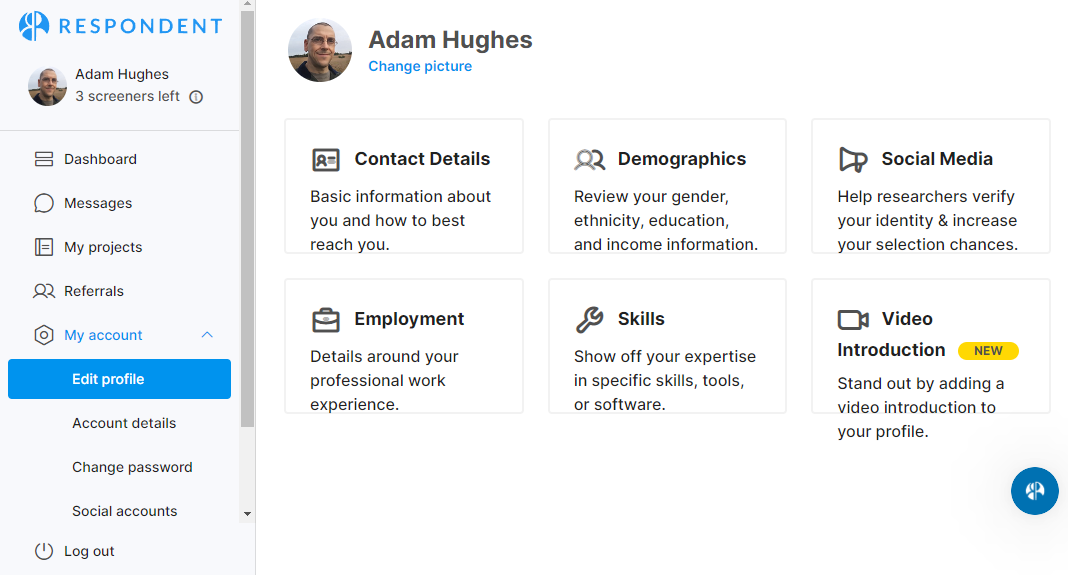
You’ll submit most of this information when you sign up as a participant in Respondent, but you can come back to your profile any time to make updates.
Respondent.io Review: Alternatives
There aren’t many platforms that compete directly with Respondent.io, but quite a few sites pay you for your opinion in some form or another.
Below are some of the most popular of those.
Swagbucks
Swagbucks is a popular rewards platform that pays you to take surveys, search the web, play games, watch videos, and shop online.
That’s a much wider span of opportunities than what Respondent.io offers, but there is a downside. Namely, Swagbucks pays in “points,” which you can then redeem for cash, gift cards, sweepstake entries, or donations.
Swagbucks also doesn’t pay nearly as much as Respondent.io, but most Swagbucks tasks are pretty quick and easy to complete. Respondent studies, on the other hand, usually require you to sit for an interview as a research participant.
You can also earn bonuses through Swagbucks, including $10 for signing up.
There is a $1 payout threshold, which is pretty easy to reach.
Check out our full Swagbucks review to get all the details
Survey Junkie
Survey Junkie is another popular survey site that pays for your opinion.
As with Swagbucks, you earn points by taking surveys, and then you can convert those points into gift cards or PayPal cash.
You have to hit $5 in earnings before Survey Junkie pays out, but it only takes a few surveys to reach that milestone.
Our Survey Junkie review has all the details on how to earn with this platform.
Inbox Dollars
Inbox Dollars stands out in this crowd because they pay in cash, not points.
And, like Swagbucks, Inbox Dollars pays you for a variety of online activities: completing surveys, reading emails, watching videos, and playing games.
The payout threshold is pretty high at $30, and it can take a while to get there since surveys pay between $0.50 and $5 each.
But at least you know you’ll have a decent payday for your efforts and not just a gift card.
Check out our full Inbox Dollars review for more details.
Respondent.io Review: Final Verdict
So after this Respondent.io review, is it worth your effort?
If you have the time to dig in deep and become a really engaged study participant, you’ll love Respondent.
But if you’re just looking to make a quick and easy buck, there are probably better options.
For most people, Respondent.io can be a great option to earn some real money online in your spare time.
You just have to be willing to put in the time and effort. And you have to be patient because landing a gig is no easy feat.
The good news is you have nothing to lose by taking Respondent.io for a spin. And you might just earn a pretty penny for your efforts.










